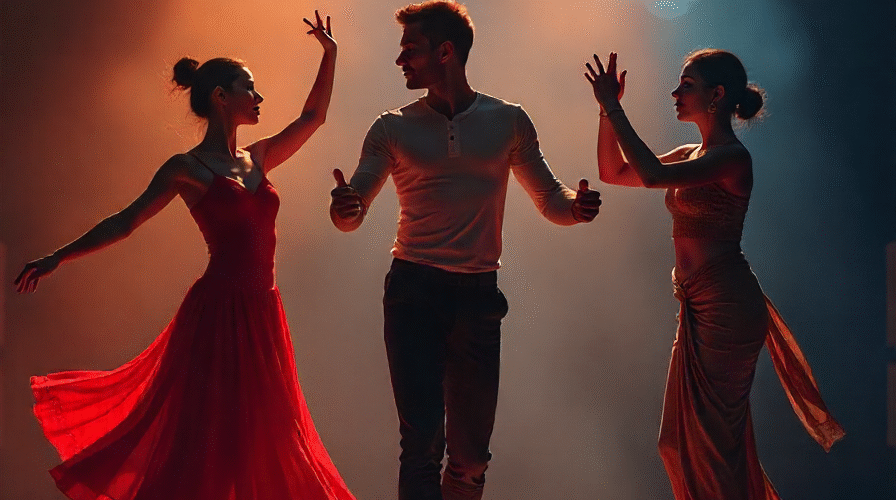Dance has existed for as long as humans have had the instinct to move with rhythm. It transcends spoken language, bridging cultures, generations, and emotions. From ancient rituals to viral online trends, dance has remained an enduring art form — evolving with each era while preserving its timeless essence.
The Origins of Dance
Archaeological findings and historical records suggest that dance has been part of human culture for tens of thousands of years. Early humans used dance in ceremonies to celebrate harvests, honor deities, and mark life events such as births, marriages, and victories in battle. In these contexts, movement was more than entertainment — it was a sacred act, a form of storytelling, and sometimes even a means of survival.
Many traditional dances still carry traces of these ancient roots. The whirling movements of Sufi dancers symbolize spiritual devotion, while the stomping rhythms of African tribal dances often mirror the heartbeat of community life.
Styles Across the Globe
The diversity of dance styles reflects the richness of global culture. Here are just a few that have captured the world’s imagination:
-
Ballet – Originating in the courts of Renaissance Italy and later flourishing in France and Russia, ballet combines discipline with artistry, telling stories through precise, graceful movements.
-
Flamenco – A passionate Spanish art form blending percussive footwork, guitar, and song, born from a mix of Romani, Moorish, and Andalusian influences.
-
Kathak – One of the classical dances of India, Kathak uses intricate footwork and expressive gestures to narrate stories from ancient epics.
-
Hip-Hop – Emerging from the streets of New York City in the 1970s, hip-hop is a cultural movement that combines dance, music, and visual art, constantly evolving with each generation.
-
Salsa – A vibrant Latin dance known for its energetic spins and fluid movement, drawing from Cuban and Puerto Rican musical traditions.
Each style has its own rhythm, vocabulary, and philosophy, making dance a truly universal yet deeply personal art.
Dance as Communication
Dance communicates in ways that words cannot. A choreographer can express themes of love, loss, joy, or struggle through movement alone. A single gesture — a lifted chin, an outstretched arm — can convey more emotion than an entire paragraph.
In many cultures, dance acts as a living history book, preserving stories and customs through movement. The Māori haka, for example, is both a war dance and a display of cultural pride, performed at significant gatherings to pass on traditions.
The Physical Benefits of Dance
Aside from its artistic value, dance is a powerful form of exercise. It improves:
-
Cardiovascular health through sustained movement.
-
Muscular strength and flexibility by engaging multiple muscle groups.
-
Balance and coordination through controlled, precise motions.
-
Posture by strengthening core muscles and enhancing body awareness.
Unlike many workouts, dance often feels less like exercise and more like a joyful escape, making it easier to stick with long term.
Mental and Emotional Wellness
Dance does not only train the body; it nourishes the mind. Studies show that dancing can:
-
Reduce stress by releasing endorphins.
-
Boost memory and cognitive function through learning choreography.
-
Increase self-confidence by improving body awareness and performance skills.
-
Provide an emotional outlet, allowing dancers to process feelings through movement.
Many find that dancing in groups fosters a sense of belonging, combating loneliness and creating lasting friendships.
The Discipline Behind the Art
While dance can be spontaneous and playful, professional-level performance requires discipline. Hours of daily training, repetition, and refinement are standard for those pursuing dance as a career. Technique must be developed over years, and injury prevention becomes a crucial skill in itself.
This discipline often extends beyond the studio. Dancers must manage nutrition, rest, and mental focus to maintain peak performance. In many ways, the mindset of a dancer mirrors that of an athlete — rigorous training balanced with artistic expression.
Dance in the Digital Age
Technology has transformed how dance is learned, shared, and appreciated. Online tutorials, virtual classes, and social media platforms have opened the art to a global audience. A choreography created in one corner of the world can be learned and performed by someone thousands of miles away within days.
While this connectivity fuels creativity and cultural exchange, it also raises questions about ownership and credit. Traditional dances sometimes get repackaged without acknowledgment of their origins, making cultural respect more important than ever.
Careers in Dance
A love for dance can lead to many paths beyond performing on stage. Dancers may become choreographers, teachers, movement therapists, or artistic directors. Others work in film, television, or behind the scenes in production and costume design.
In recent years, dance therapy has gained recognition as a way to help individuals express themselves, improve mental health, and recover from trauma. This field combines movement with psychology, proving that dance can heal as well as entertain.
Preserving Tradition While Embracing Change
One of the great challenges — and joys — in the dance world is balancing tradition with innovation. Cultural dances must be preserved in their authentic form, yet art thrives when it evolves. Contemporary choreographers often blend classical techniques with modern influences, creating something entirely new while honoring the past.
Festivals, cultural exchanges, and educational programs play a key role in keeping heritage dances alive while encouraging experimentation. This cross-pollination ensures that dance remains vibrant and relevant across generations.
Final Thoughts
Dance is more than a sequence of steps. It is a living art, a form of self-expression, a discipline, and a mirror to society. It can be personal or collective, ancient or avant-garde, athletic or meditative. Whether you are watching a graceful ballet, joining a crowded salsa floor, or moving freely in your living room, dance has the power to connect you to yourself and to others.
In the end, dance is the language our bodies have always known — and it will continue to speak, as long as there are hearts to feel the rhythm and feet to follow it.

